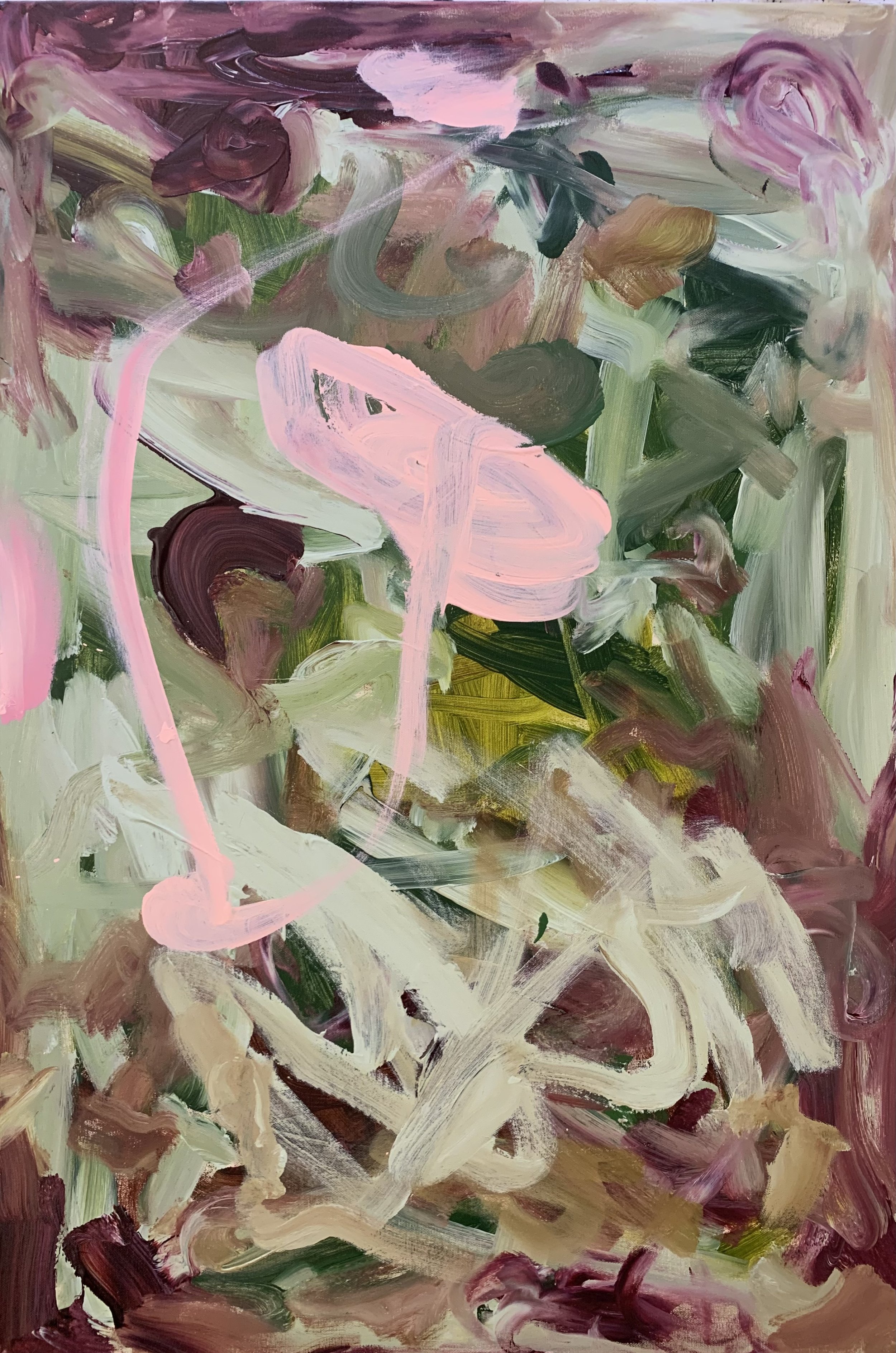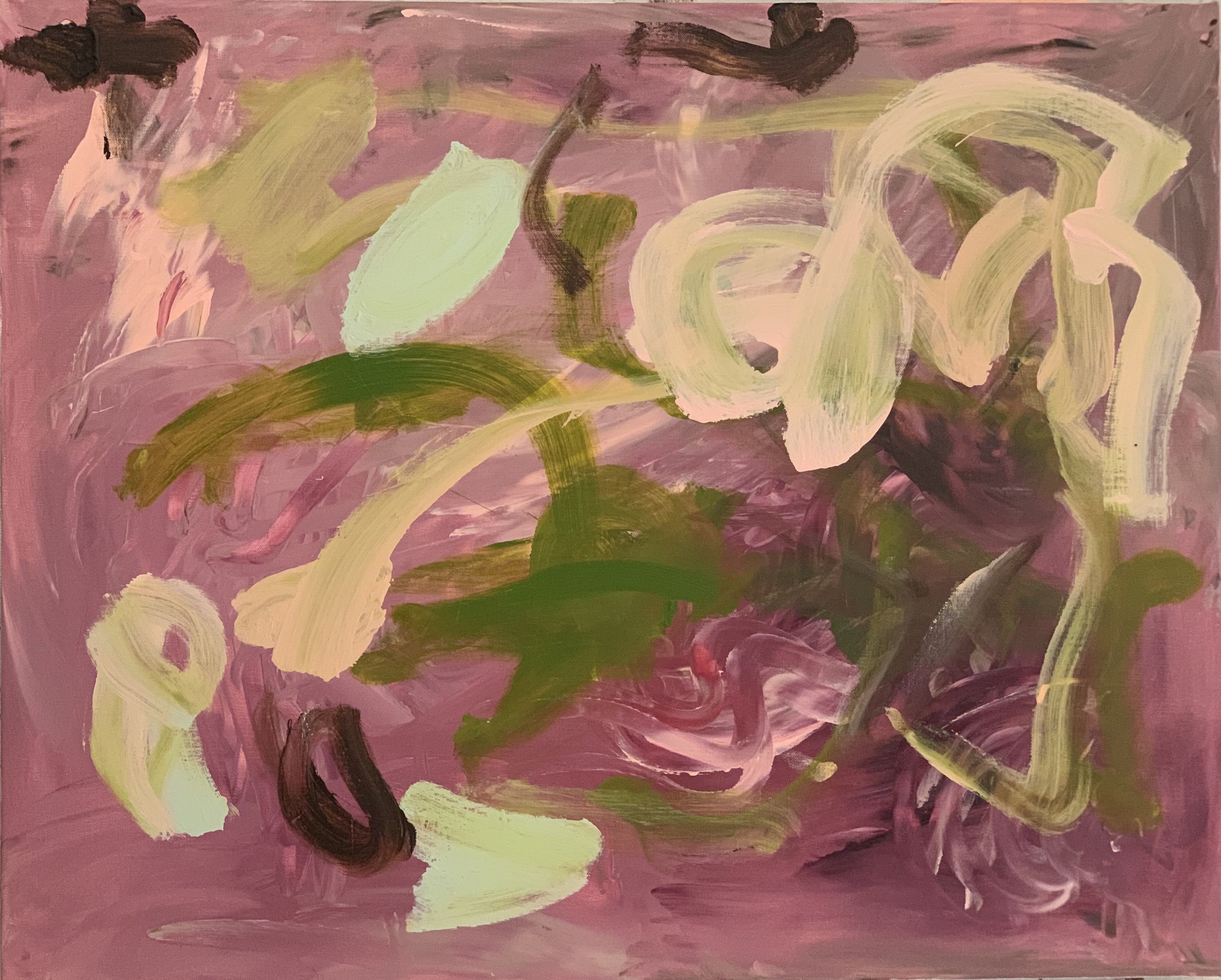Gina Dominique
Gina Dominique lives on what were originally lands of the Lenape peoples, Manahatta now called Manhattan. She is painter and installation artist who explores connections between abstraction, color, consciousness, and experience in her work. She has had over one dozen solo shows and has had pieces in more than 50 group exhibitions. Her next scheduled exhibition, July-October 2023, is a solo show at Stevenson University's Greenspring Art Gallery, Stevenson, MD.
The Corcoran Gallery of Art's Alma Thomas Painting Award, a Lehman College Fellowship Leave grant, a Delta College Barstow-Frevel Scholarly Achievement Award, and a Central Michigan University Artist Award are among the accolades Dominique has received. And she has attended artist residencies at the 18th Street Arts Center, Tamarind Institute, and Pennsylvania Governor's School for the Arts.
Gina Dominique is currently a professor of art at City University of New York's Lehman College, Bronx, NY, where she teaches painting. She is pursuing a practice-based PhD at Transart Institute for Creative Research at Liverpool John Moores University, Liverpool. From 2013-2016, she served as Lehman College's School of Arts & Humanities Associate Dean. Between 1999-2013 she earned tenure, full professor rank/title, and served as the Art Department lead at Delta College, University Center, MI.
Dominique earned an MFA at the University of New Mexico, Albuquerque, NM. She earned a BFA at George Washington University's Corcoran School of Arts & Design. And for the first two years of her BFA, she attended Carnegie-Mellon University, Pittsburgh, PA. Gina Dominique (nee Shorto, m. Dominique Hersey) was born in Johnstown, PA.
Praxis Statement
My literature review is based on how artists, theorists and philosophers use color to discuss aesthetics, intersectionality and their painting. For example, in an Aperture interview conducted by Annika Klein of artist Becca Albee titled “Full Color Feminism”, Albee says of her photographs and installation "Radical Feminist Therapy: Working in the Context of Violence" series that she researched different lifestyle-oriented and types of color-related therapies and considers gender constructs surrounding the marketing of color to women, and its relationship to capitalism.
And Tomashi Jackson's abstract mixed media works, in which she deals with connections between the linguistics of color theory and racialized America's focus on color, is the subject of Risa Puleo's Hyperallergic article "The Linguistic Overlap of Color Theory and Racism", dated December 14, 2016. Puleo addresses how Jackson found her studies of Josef Albers' color language being used to describe color perception, which mirrored the language of racialized segregation. That inspired Jackson to use color as an aesthetic strategy for investigating the American history of mid-to-late twentieth century school de-segration and recent re-segregation of public spaces.
Like Albee's and Jackson's work, mine also challenges existing gender, color narratives by examining, from a 21st C. post-colonial perspective, the influence that color theories have on artists, including myself. My focus is on how feminist aesthetics, phenomenology, intersectional theories, and historical or contemporary painting practices impact creative expression. By bringing my olive-skinned, female body and my voice to the historically male dominated narratives on aesthetics, color theory and art history, my praxis and thesis newly contributes.
Research Interests
Motivated by color and identity, last year I started a series titled Color Coded. Its color palettes are influenced by the Fitzpatrick Skin Type Scale, used since the 1970s to determine SPF levels required to prevent sunburn, by its predecessor the Von Luschan Scale, developed 100 years prior to classify ethnic populations via skin color and race, and by various beauty industry product promotional color charts.
My own complexion lines up with the charts middle shades labeled “olive” or “tan”, which led me to mix the under-paintings fleshy olive mid-tones. I inherited my complexion from my parents, both born to their respective olive-skinned parents, who were marginalized for being “impure”, lesser-than Mediterraneans. My great-grandparents and grandparents were among the 5 million southern Italian refugees to the US and 30 million globally, who between 1880-1940 permanently migrated.




